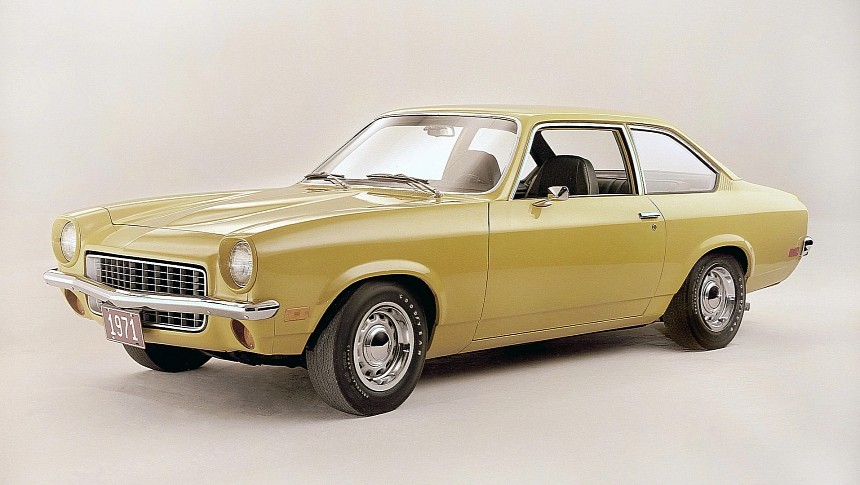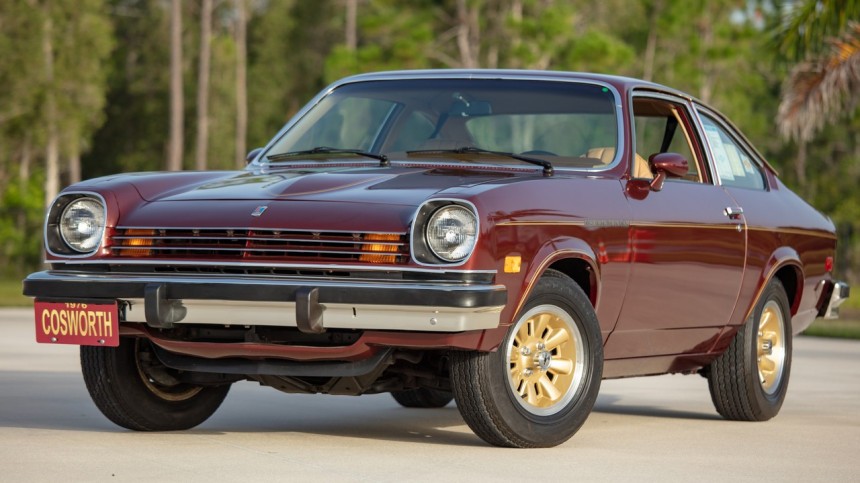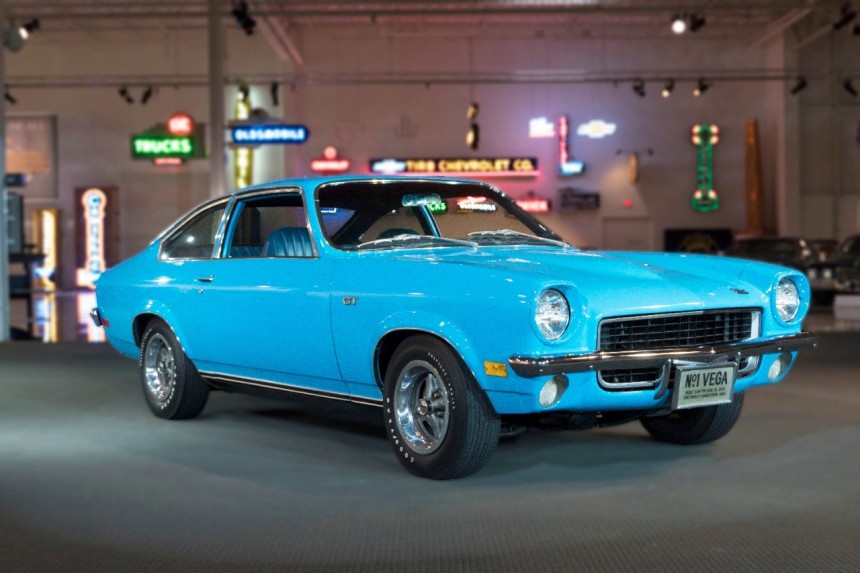Sometimes, a vehicle comes along that promises a lot but delivers very little. One example is the Chevrolet Vega, a compact car from the brand with the bowtie that promised an affordable alternative to the Volkswagen Beetle, while weighing even less. But the promise of such a car quickly became a nightmare, as Chevrolet battled with a top-heavy engine and a grossly inflated price over what they had initially intended.
Even Chevy's own engineers struggled with this thing, unhappy at having to work on a car they didn't really want to. While the Vega initially had a somewhat positive reception thanks to things like good handling, that quickly disappeared. By 1972, the Vega was in deep trouble as recalls started to ruin its reputation.
Yet things quickly started going wrong. For starters, the engine ended up being an aluminum one, which dramatically increased the weight of the car. The fact it was top-heavy didn’t help matters either. The Vega would be some 200 lbs, or around 90 kg, over the intended target weight. Engineers within Chevrolet had become increasingly disgruntled at the problems they were facing, especially when the original engine design was shoehorned out of the vehicle. Even so, initial reception to the Vega was quite promising, with the handling of the car praised by the automotive media.
It didn’t take long though for more problems to surface. While the Vega had more power than the VW Beetle, the former was also more expensive. It retailed at $2,091 when it first hit the market, which was $311 more than the Beetle, a significant amount of money back in the 1970s. It also cost $172 more than the Ford Pinto, although the Pinto would become even more maligned than the Chevrolet would. But what began to hurt the Vega were issues surrounding quality control, with a defect-feedback system removed from within Chevrolet.
Cost cutting saw the quality control division cut back massively, and then issues with the rear axles started to emerge. In frightening fashion, the axles would simply separate from the car without warning, causing your wheels to simply fall off. Perhaps scarier was that throttles could jam open, with faulty brackets on the carburetor to blame for this issue. The car's reputation would now slowly unravel. Half a million Vegas were recalled by Chevrolet in 1972. While this all sounds terrible for the Vega, things only got worse as more severe problems were unearthed by various owners of the subcompact.
Coolant recovery tanks were finally equipped in the summer of 1972. But not to all models, only those with air-conditioning and the L-11 two-barrel engine. They eventually became standard in the 1973 model year, and Chevrolet was forced to repair virtually all overheated engines in 1974 to keep customers somewhat happy. It wasn't until 1976 that a seriously-modified Vega engine made its debut, with upgraded seals and heavily altered cooling.
Ever since its debut, the Vega has been one of the most talked about and debated cars in Chevrolet history. On the one hand, it was a spacious, capable subcompact car with more features than a Beetle. On the other hand, it was much heavier and more expensive than the V-Dub, and prone to melting its own powertrain. Oh, and we didn't even mention any of the rust issues, particularly on the front end. In 2023, classic examples of the Vega remarkably go for reasonable amounts of money, and examples already in good condition make for great classic cars. Also, Cosworth did manage to make the Vega more exciting in later years. But those who own an old Vega will have to stay on top of it, because even though this should have been the car of dreams, it rapidly became the car nightmares were made of.
What Chevrolet initially promised with the Vega
General Motors chairman Jim Roche made a lot of promises regarding the Vega and its initial design. He claimed that the car would not only cost less than Volkswagen's Beetle but also weigh under a ton - a weight figure that seems inconceivable in these modern times. A revolutionary sub-compact car was promised, with the Vega receiving the codename XP-887. A short-stroke, iron-block Chevrolet engine was set to go under the hood, and so the Vega was thought to offer more sophistication than its German rival.Yet things quickly started going wrong. For starters, the engine ended up being an aluminum one, which dramatically increased the weight of the car. The fact it was top-heavy didn’t help matters either. The Vega would be some 200 lbs, or around 90 kg, over the intended target weight. Engineers within Chevrolet had become increasingly disgruntled at the problems they were facing, especially when the original engine design was shoehorned out of the vehicle. Even so, initial reception to the Vega was quite promising, with the handling of the car praised by the automotive media.
Things unraveled quickly for the Vega
Cost cutting saw the quality control division cut back massively, and then issues with the rear axles started to emerge. In frightening fashion, the axles would simply separate from the car without warning, causing your wheels to simply fall off. Perhaps scarier was that throttles could jam open, with faulty brackets on the carburetor to blame for this issue. The car's reputation would now slowly unravel. Half a million Vegas were recalled by Chevrolet in 1972. While this all sounds terrible for the Vega, things only got worse as more severe problems were unearthed by various owners of the subcompact.
Engine issues really blighted the Chevrolet subcompact
It was soon found that a lack of a coolant recovery tank in early Vegas, poor valve stem seals, and insufficient cylinder wall coating would lead to serious engine issues. These issues would cause the engines to seriously overheat, which could effectively force the power unit to melt from within. This would further enrage those working at Chevrolet, knowing that their desired iron-block engine may not have suffered all of these problems.Coolant recovery tanks were finally equipped in the summer of 1972. But not to all models, only those with air-conditioning and the L-11 two-barrel engine. They eventually became standard in the 1973 model year, and Chevrolet was forced to repair virtually all overheated engines in 1974 to keep customers somewhat happy. It wasn't until 1976 that a seriously-modified Vega engine made its debut, with upgraded seals and heavily altered cooling.














